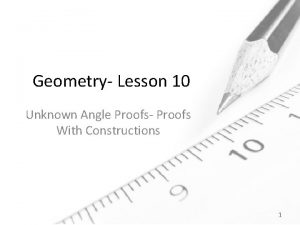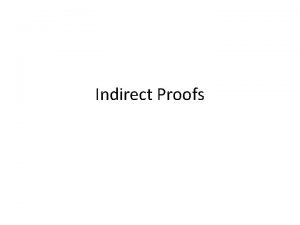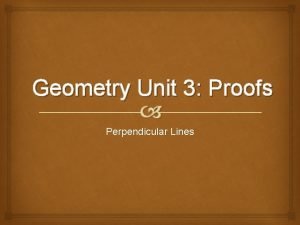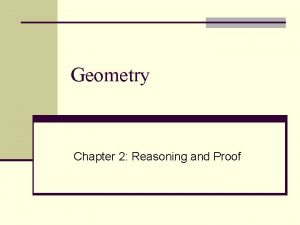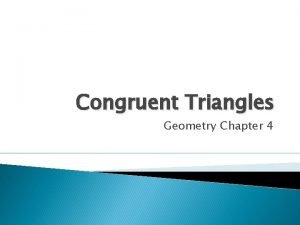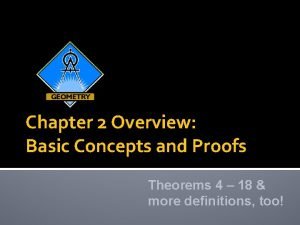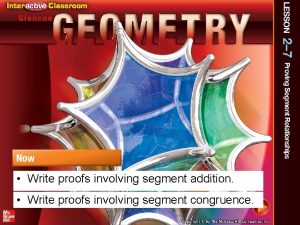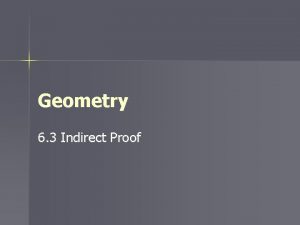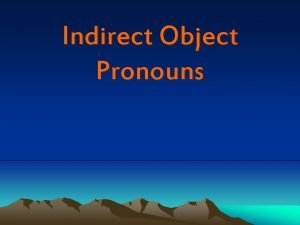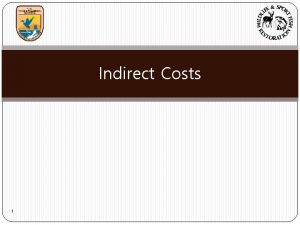Chapter 5 1 Write Indirect Proofs Indirect Proofs







- Slides: 7

Chapter 5. 1 Write Indirect Proofs

Indirect Proofs are…? An indirect Proof is used in a problem where a direct proof would be difficult to apply. It is used to contradict the given fact or a theorem or definition.

D Given: DB AC M is midpoint of AC ~ Prove: AD ≠ CD T A B M C In order for AD and CD to be congruent, Δ ADC must be isosceles. But then the foot (point B) of the altitude from the vertex D and the midpoint M of the side opposite the vertex D would have to coincide. Therefore, AD ≠ DC unless point B point M.

Rules: 1. List the possibilities for the conclusion. 2. Assume negation of the desired conclusion is correct. 3. Write a chain of reasons until you reach an impossibility. This will be a contradiction of either: 1. the given information or 2. a theorem definition or known fact. 4. State the remaining possibility as the desired conclusion.

Either RS bisects PRQ or RS does not bisect PRQ. Assume RS bisects PRQ. Then we can say that PRS QRS. Since RS PQ, we know that PSR QSR. Thus, ΔPSR ΔQSR by ASA (SR SR) PR QR by CPCTC. But this is impossible because it contradicts the given fact that QR PR. The assumption is false. RS does not bisect PRQ. T

Given: <H Prove: JH ~ ≠ <K ~ ≠ JK J H K » Either JH is to JK or it’s not. » Assume JH is to JK, then ΔHJK is isosceles because of congruent segments. » Then H is to K. » Since H isn’t congruent to K, then JH isn’t congruent to JK.

Given: MATH is a square In terms of a, find M and A (0, 2 a) M A (2 a, 2 a) What are the coordinates of A and M? What is the area of MATH? A = 4 a 2 H (0, 0) T (2 a, 0) What is the midpoint of MT? (a, a)
 Unknown angle proofs-proofs with constructions
Unknown angle proofs-proofs with constructions Lesson 9 unknown angle proofs—writing proofs
Lesson 9 unknown angle proofs—writing proofs Indirect proof steps
Indirect proof steps Geometry unit 1 proof parallel and perpendicular lines
Geometry unit 1 proof parallel and perpendicular lines Chapter 2 reasoning and proof
Chapter 2 reasoning and proof Congruent triangles chapter 4 answers
Congruent triangles chapter 4 answers Chapter 2 basic concepts and proofs answers
Chapter 2 basic concepts and proofs answers Direct and indirect speech structure
Direct and indirect speech structure
